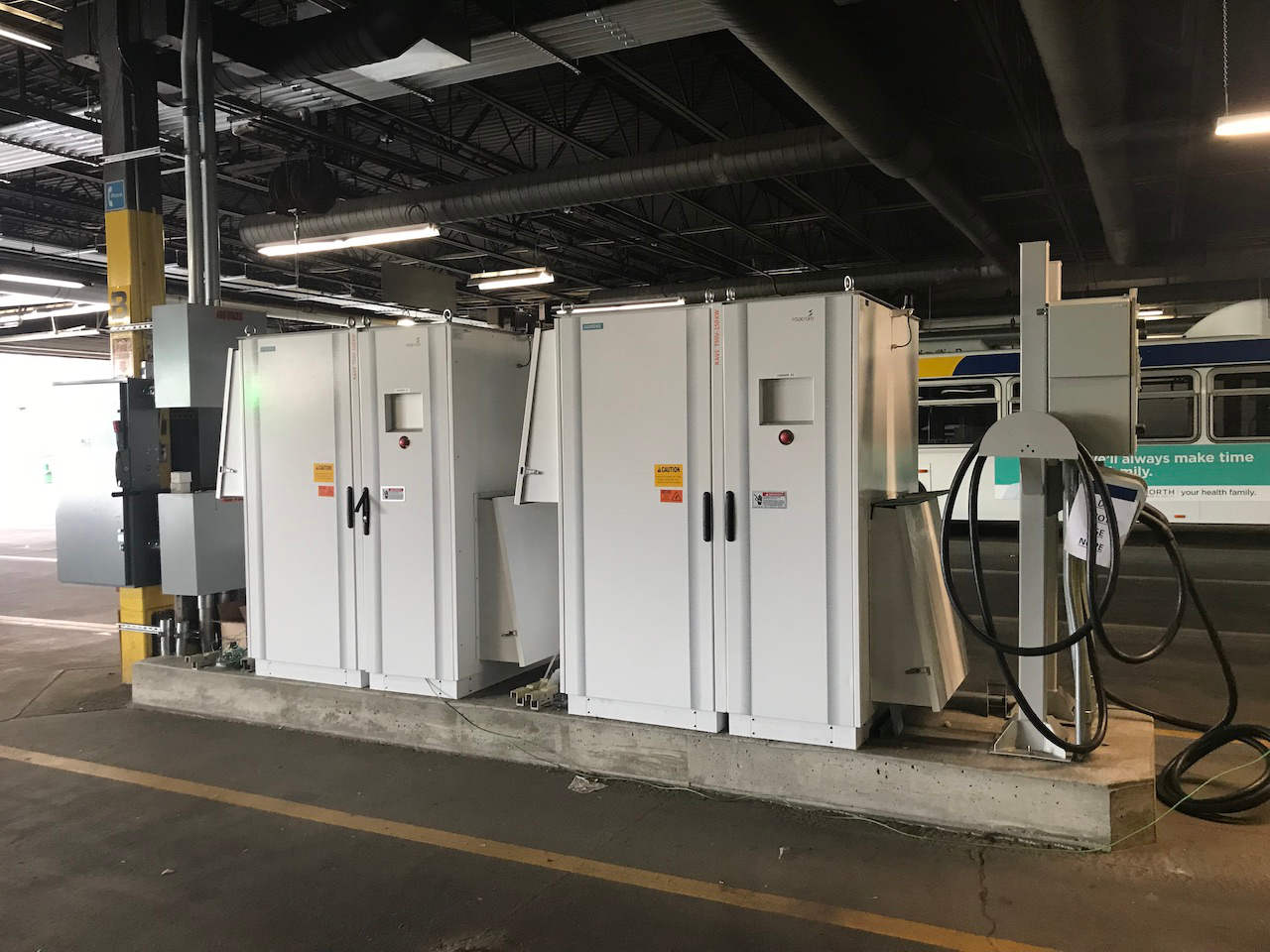Designing utilities, public works, airport, mass transit, transportation or other government projects is a big task. Learn how to design mechanical systems in government buildings.

Participants:
- Michelle Blake, PEng, Vice President, Industrial Buildings, Stantec, Vancouver, B.C.
- Jeremy Cooan, PE, LEED AP BD+C, Senior Electrical Engineer, Stanley Consultants, Minneapolis
- Michael J. Rossini, PE, Associate, Senior Electrical Engineer, Bala Consulting Engineers, Boston
- Ciarán Smyth, PE, CEng, PMP, Vice President, WSP, New York City
- John Gregory Williams, PE, CEng, Vice President, Harris, Oakland
- Matthew Williamson, PE, Associate Principal, Arup, San Francisco
Describe utilities, public works or transportation projects in which you designed a smoke control system for a large atrium or similar space. What were the smoke control and HVAC goals and how did you achieve them?
Ciarán Smyth: Given the size of the LaGuardia Airport project there are multiple active smoke control systems (zones), such that if one system is engaged the remaining part of the terminal can continue to operate. This required significant coordination between the smoke model consultant, architect and MEP trades, specifically BMS/HVAC and fire alarm. Adequate sequences were designed for each zone complete with a specific set of smoke control actions and initiating events for each system (zone).
John Gregory Williams: Design for a large airport terminals and other similar “cathedral” like spaces brings many issues with regards to smoke control. A cost-effective strategy to minimize the cost is to use the HVAC systems as much as possible for some part of the smoke control system, if not all. The most usual approach is to try to use AHU for the makeup air requirement for smoke exhaust systems. Often these buildings are also zoned in a complex manner due to their size and maintaining separation between different flows of people. Careful attention must be made of not only to the controls systems for the HVAC system and that it meets higher UL requirements, but also how this system is integrated with many of the other complex systems of the building such as the fire alarm, security, public address, etc.
What unusual or infrequently specified products or systems did you use to meet challenging heating or cooling needs?
John Gregory Williams: For products, other than the sheer size of some equipment or quantity, which can offer some benefits due to the scale, most products are generally standard. Where we like to play close attention to detail is often in the robustness of the final terminal devices in terms of their materials and ease of cleaning and maintenance.
An area we have enjoyed pushing design integration is how some HVAC devices, often for air displacement systems can be integrated into other elements, such as walls, billboards or other wayfinding elements.
Michael J. Rossini: The use of air-source hydronic heat pump systems in the design of heating and cooling systems is a relatively recent development. These systems are particularly useful where heat recovery can be applied to meet simultaneous chilled water cooling and hot water heating requirements for hot water reheat during summer conditions, for example.
How have you worked with HVAC system or equipment design to increase a building’s energy efficiency?
Michael J. Rossini: Designing highly efficient buildings requires the proper selection of the equipment type as well as the optimization of the equipment design to meet the project requirements. This could be determining the best chilled water conditions or hot water conditions to meet the design while optimizing the equipment to meet efficiency requirements.
John Gregory Williams: Harris is currently working on the Minneapolis Bus Garage which incorporated a ground loop system using a traditional plan and spec delivery. Through a value engineering approach during pre-construction, we recommended improvements to the HVAC and storm system to increase efficiency and reduced costs. We changed the HVAC system from a geothermal heat pump system to a heat recovery chiller with a geothermal loop. This change increased efficiency, balanced the load in the geothermal system and increased capacity. This also allowed a reduction in the piping size for the entire HVAC system. On the storm system we reduced 18- and 24-inch underground piping by 4000 linear feet, increased rainwater capture and consolidated maintenance.
Ciarán Smyth: Energy efficiency is at the forefront of all HVAC design regardless of building type. Energy codes and certification systems such as LEED, WELL, etc. are also driving energy-efficient design. There are multiple ways to adopt energy efficient processes with respect to HVAC and it starts with the HVAC system selection.
Depending on the project specifics, a particular system can be more suited to one building than to another. In large transportation hubs in the Northeast, air handling units with a 100% outdoor air economizer may be an option as they can inherently meet the larger outdoor air rates required for the higher occupancies while also taking advantage of “free cooling” during shoulder seasons.
What unique heating or cooling systems have you specified into such projects? Describe a difficult climate in which you designed an HVAC system for a utilities, public works or transportation building.
Ciarán Smyth: In LaGuardia Airport there were instances where glazing heights directly adjacent to hold room seating areas were in excess of 45 feet. Ground level fin tube radiators alone were not sufficient to maintain occupant comfort conditions in accordance with ASHRAE comfort standard 55 in these spaces.
In lieu of using midlevel FTR, which would have resulted in time consuming coordination with the façade, we carried out CFD analysis using ceiling radiant panels to prove the standard could be met. The panels were carefully coordinated with the sloped ceilings and were controlled in unison with the low level FTR.
Michael J. Rossini: Bala is currently designing a large K-12 high school in the Boston area to become a Net Zero Energy building. The initial design concept for the HVAC system was based on a geothermal ground-source heat pump system to provide most of the building heating and cooling. Areas not served by this system are based on air-cooled VRF systems which are capable of providing full heating. When the first test well was drilled for the ground-source system, contamination was encountered, which eventually led to the elimination of the geothermal wells. To preserve the net zero energy goal as well as to keep the use of hydronic heating and cooling systems in the building, systems were changed to air-source hydronic heat pumps. These systems can produce chilled water and hot water simultaneously to meet the various zone requirements. The challenge is these systems do not have the same operating range as VRF systems which provide full heating down to -4°F or even lower for some systems. Operation of air-source hydronic heat pumps is generally limited to about 5°F. While this meets the heating outdoor air design conditions, conditions in the Boston area can be well below zero. For this reason, an electric boiler was added to the project for heating backup during cold ambient air conditions. While this is generally undesirable, the expected number of hours the boiler will be used each year will be minimal and fossil fuel systems will not be needed.
Michelle Blake: One of the unique heating systems we have used is the waste heat capture from the co-gen unit in the Whitby Rail Maintenance Facility. Located in Ontario, the site frequently experiences winter temperatures well below 0°C. This same project required a heating system for the wheel shop. The train set does not fully fit inside the building for all wheel sets. This resulted in the overhead door being open for a good portion of the process. The client required the building heat to be maintained within a given temperature range. To accomplish this, we used highly effective air curtains at the overhead doors and a heating system large enough to provide a quick recovery when the door is open.
What best practices should be followed to ensure an efficient HVAC system is designed for this kind of project?
Michelle Blake: Best practices frequently require higher air exchanges than minimum code requirements to address humid environments in the wash areas and air quality in shop spaces.
Ciarán Smyth: Location of MEP equipment can help reduce energy consumption. For example, locating a fan or pump room closer to what it needs to serve reduces pressure drop (and materials) which results in lower energy consumption. Once again, planning with the architect for plantroom space/location is key. System selection is also key. What will be most efficient for one building type may not be the optimum fit for another.
In this post-COVID world, filter selection for air systems is, for want of a better phrase, under the microscope. HEPA and/or carbon filters along with higher value MERV filters will result in higher pressure drops and ultimately more energy consumption. UV-C light and ionization technologies offer a strategy that use much smaller pressure drops from the filters mentioned; but once again the right fit for each project may incorporate a mix of different filter-type technologies. Filter maintenance is also key to ensure fans are operating as designed.
HVAC controls are key to ensuring efficient HVAC system design and operation. Controls should aim to ensure systems are running at their optimum for off-peak times as well as design conditions.
With all the above, testing and commissioning of systems is of the upmost importance. There is little value in designing an energy efficient system, only for it to be installed and/or commissioned incorrectly, such that it does not perform as intended. Using measurement and verification tools and strategies post occupancy is also advised. This can greatly assist with optimizing the system based on real-time post occupancy data.
John Gregory Williams: Like other large-scale projects, fine tuning the sizing, operation modes and controls in the central plant to ensure that diversities are considered can make a big difference in the central plants’ performance for heating and cooling.
Michael J. Rossini: While the design and selection of efficient equipment is important, an efficient air distribution design will ultimately contribute toward much better overall performance. Air handling equipment should be located central to the areas being served avoiding long main duct runs. Coordination with the architectural and structural constraints affecting the clearances above the ceiling will also help to minimize fan energy if ducts can be larger. To a lesser extent, but still important is the design of the water distribution systems to minimize pumping energy. Beyond these basics, control strategies that look at reducing supply air and ventilation air whenever possible will yield the significant results.
What is the most challenging thing when designing HVAC systems in such buildings?
Michelle Blake: Various interior spaces throughout the facility — administration and staff support areas, maintenance pits, shops, humid indoor vehicle wash areas and electronic shops — require different HVAC solutions.
Ciarán Smyth: Coordination of required HVAC system space is necessary for major equipment and ceiling void space. Service distribution and secondary equipment can be challenging, particularly for front-of-house spaces. Airport HVAC design should work in unison and complement the architect’s aesthetic desire while ensuring system performance and operation. Close coordination with the architect and structural engineer should allow for adequate installation and maintenance of equipment. Access panels should be agreed with and shown on HVAC drawings but also coordinated with the architectural package.
Louvers for intake and exhaust should be coordinated with façade and architectural elevations and should be based on requirements calculated by the HVAC engineer.
Often on transportation projects, we are dealing with existing buildings being replaced in kind and/or restoration of existing buildings which almost always require design and construction phasing. These types of projects create challenges that are not prevalent in new build. Designing HVAC systems for these types of projects requires close coordination with planners, contractors and architects as use of existing systems coupled with new system design is often required to negotiate the various project phases. It’s important to acknowledge in the design the ability to test and commission the systems as they relate to the phasing.
What unique plumbing, piping or pumping projects have you designed for water or wastewater facilities?
Ciarán Smyth: Airplane waste is unique to airports. Contrary to popular belief, airplanes are not allowed to discharge waste during flight, nor is there a mechanism for the pilot to do so (although leaks can occur). A specialized system incorporating a triturator was incorporated in a dedicated room to assist with treating waste from the airplane before its discharge into the sewer system. A dedicated odor neutralizing system was also incorporated into the room to ensure malodors were eliminated.



